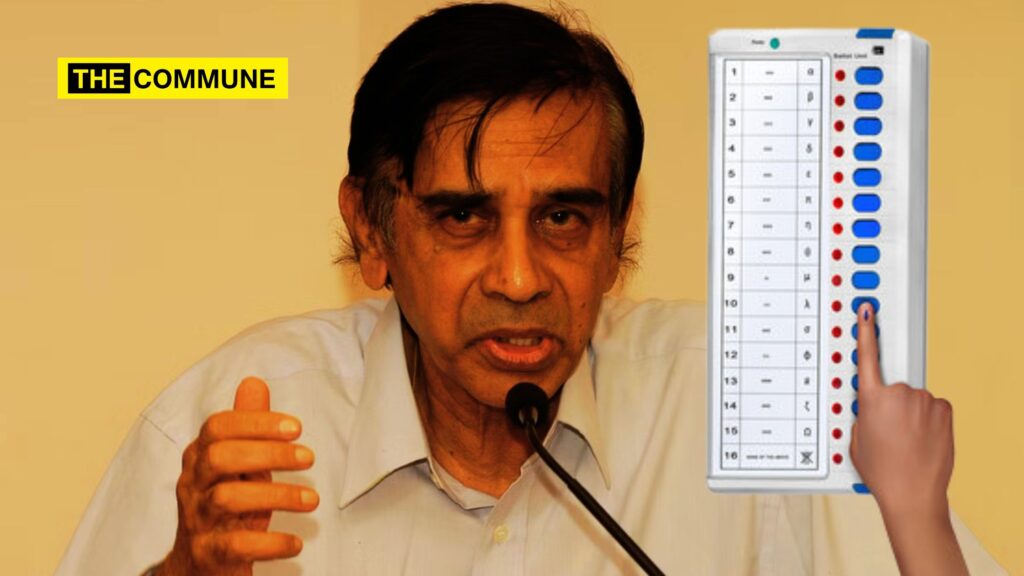Tamil Nadu has given the world significant democratic inventions. After all, this is a land where decentralization of power and local self-governance was in practice hundreds of years before it became a buzz word for today’s governments, world bodies and think-tanks.
It wouldn’t be an exaggeration to say that the people of this land have democratized democracy itself by coming up with unique election mechanisms.
During the Chola era, there was a system called the “Kudavolai” system through which members of the village assembly known as the ur or the sabha were elected. The village was divided into 30 wards and each ward representative were elected through a democratic process.
Names of the contestants from each ward were written on a palm leaf, put into a pot and shuffled. A child picked up palm leaves one by one from the pot in front of the temple. Persons whose name tickets were picked up by the child were declared elected.
This was a significant democratic process invention in those times.
Cut to post-independent India. The year was 1957 and Indians were voting in the second Lok Sabha elections. Back then, state and Lok Sabha elections were held simultaneously.
The Matihani Assembly in Bihar’s Begusarai District saw supporters of Congress leader Saryug Prasad Singh stopping people from electing rival Communist candidate Chandra Shekhar Singh. Though technically this isn’t rigging, it is popularly recalled as the first instance of booth capturing an election.
Rigging involves forceful capturing of a poll booth by party workers and casting fake votes in the names of those registered as voters. This became a regular affair in the 1970s and 1980s as the number of parties and candidates multiplied so much so that in 1989, the Representation of the People Act, 1951 was amended to include booth capturing as an offense punishable by law. This also prompted Indians in the government machinery to think of a scalable solution that will solve this problem and they knew that only technology could do that.
And so a team was set up at the Bharat Electronic Limited, with a talented electronics engineer from Tamil Nadu named S. Rangarajan supervising the design and production of a machine that will solve booth capturing and rigging forever – the EVM.
This Rangarajan was none other than famous writer that every Tamil would know of – Sujatha. Sujatha in his memoir Katradhum Petradhum (The things I learnt and received) details how EVM is tamper-proof.
EVM is essentially a Hitachi microcomputer. Its control program is written in Read-Only-Memory (ROM). By definition, it cannot be overwritten or tampered. It accurately records and tallies each vote against a serial number of the candidate.
An EVM is designed with two units: the control unit and the balloting unit. These units are joined together by a cable. The control unit of the EVM is kept with the presiding officer or the polling officer. The balloting unit is kept within the voting compartment for electors to cast their votes. Both these machines have no bias embedded inside it. There is no networking component in the EVMs, it is impossible to manipulate them remotely.
EVMs were used for the first time in the general election in Kerala in May 1982 and since then questions have been raised over its credibility.
An LDF candidate filed a writ menu to stop EVM use. After Sujatha’s demo in judge’s chambers, it was allowed. The same LDF candidate who filed a complaint had won. “Electronics won” wrote Sujatha!
But the losing INC candidate filed a case in the Kerala High Court raising concerns about EVMs, which he lost. He appealed against the High Court’s verdict in the Supreme Court. The Supreme Court vouched that the machine was tamper proof but the prevailing laws in 1982 did not allow for EVMs to be used in elections and hence struck down the elections.
Rajiv Gandhi gave useful advise- to introduce a delay in the machine after a vote was cast, so that “mass fraud voting” can be prevented. But despite its accuracy, 1.5 lakh machines from Japan were left unused in collector offices as there was no law in place to enforce its use.
When doubts were raised over the accuracy and security of the machine, Sujatha wrote a detailed article explaining how robust and tamper proof it was. He said “That is one invention I shall be as proud of as my writings.”
The Election Commission has time and again assured that the EVMs are “unhackable”. Yet, whenever the Congress or Opposition loses and election, they allege threat to democracy levelling allegations about EVM foulplay. This is not just an insult to the Indian scientists and technicians who have built an indigenous product but also amounts to insulting the people. By questioning EVMs, they are undermining the will of the people. But all these allegation disappears when they win. Then it becomes not just their victory but a victory of democracy.
This hypocrisy itself is testimony to the sanctity of EVMs.
Sanjukta Basu still wants to hold on to "EVM tampering" theory despite a thumping majority to INC in Karnataka elections for reasons best known to her.
Let's take a short look at EVMs & their scientific "tamper-proofness" as told by writer Sujatha, whose team at BEL built it: https://t.co/tOsmnJsEOj pic.twitter.com/s5JXaDJoiu
— Tamil Labs 2.0 (@labstamil) May 13, 2023
(Kaushik is a political consultant.)
(This article has been developed based on inputs given by Tamil Labs.)
Click here to subscribe to The Commune on Telegram and get the best stories of the day delivered to you personally

